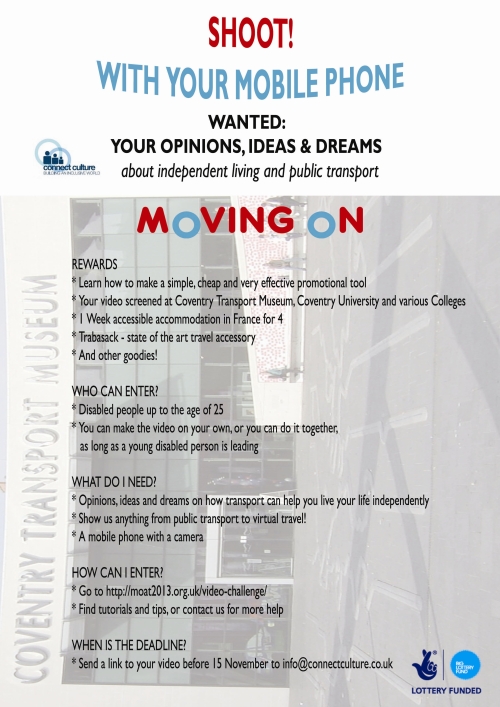
Presentation by Klaus Lohmann, Director of the German National Tourist Office UK & Ireland
I was lucky enough to catch ‘The Future of Tourism is Barrier Free’ presentation hosted by the German Tourist Board at the World Travel Market. Great to meet friends such as Alan Thomas from Wales, and online friends such as Alan Broadbent from Barcelona. Together we sampled the offered German aperitifs .

German canapes
We listened to a great presentation of the Barrier Free destinations in Germany and a business case reason for accessible tourism (growing market due to the numbers of older travellers, ‘disabled by age’ – an overlooked audience) by Tom Jamison, editor of the Able magazine. While it is good that Germany has certain areas marked out now as barrier free destinations, I somehow feel that they are still marked out segregated areas. But it was fair to say they did acknowledge this issue, it was a start and they hope to expand the accessibility to more areas.
My question was that disabled travellers’ needs are all so diverse – there is no ‘one size fits all’ – how can they make it barrier free for all? on top of that no disabled people want to be in a hospital type environment when they go on holiday and single travellers like me tend not to book through a tour operator while still expecting accessible amenities. Yes, universal design is the answer!
Our hosts were disappointed that the TWM award for the best destination for accessible travel went to Visit Flanders.
It was good to listen to the Q&A session but I had a question I wanted to add – the added barriers as a lone female disabled traveller. I raised that question with Tom. Perhaps that question need to be included in the future?
It might not fit in neatly into accessibility theme. However, as a woman traveller when I do research on accomodation, I need to check along with accessibility, the safety issue? I remember staying in an accessible hotel near the conference center in Dublin but it was a dodgy area, the restaurant/bar area was full of non residents there for the pool table. It was suggested that some of them were obviously high.
It should not be assumed that disabled travellers need hotel rooms/facilities for holidays – yes of course there are disabled tourists. But like non disabled people we often add on holidays after business trips. Recently I went to Geneva for a UN event, I was not able to stay with the other members of the group because they booked at a non accessible hotel. I had realised that it might not be a good idea to wander about the streets of Geneva on my own so I managed to persuade a friend to come as a personal assistant with me. But it is very rare to find information on such issues. Is this a hotel mainly for business travellers – full of men in business suits which might prove to be intimidating for any woman to dine alone? Staff can be patronising and think you should have a ‘carer’ with you. There is an extra layer of vulnerability and also adds to the research list when you’re a disabled woman. And disabled men who are usually chosen to do the access audits do not even consider these issues.
I am lucky in that I have travelled as much, having lived in four countries in three continents with as many languages and cultures, but it didnt take me long to realise that most people who work in the accessible travel field are men. This is fine but they seldom take the consideration the extra barriers that disabled women have as travellers. The physiological differences between men and women make it easier for men on the toileting issue – this alone mean that the man has a distinct advantage over the woman. This struck me hard when I went with a man friend to Texas. All he needed was a blanket and his personal assistant took his bottle for him to the toilet while I did not have that choice. This sole difference impacts on my choice of travel destinations and I am reluctant to take a flight which lasts more than 5 hours.
Barrier free travel is an aspiration for us all. It is good that the travel industry is starting to take note and that many of us do not want to be herded into special tours. Having inclusive public transport would be a start – I would like to take the Eurostar and wander across Europe with a rail pass as other non disabled people do.

accessible tram in Strasbourg
And of course I mentioned the Moving On: Accessible Transport – the past, present and the future and was cheeky enought to suggest our German hosts to offer a prize for the video competition for young people and am very pleased to announce that they have offered a selection of German wines – which we will offer to all those not so young people who wanted to have a go at the challenge!














